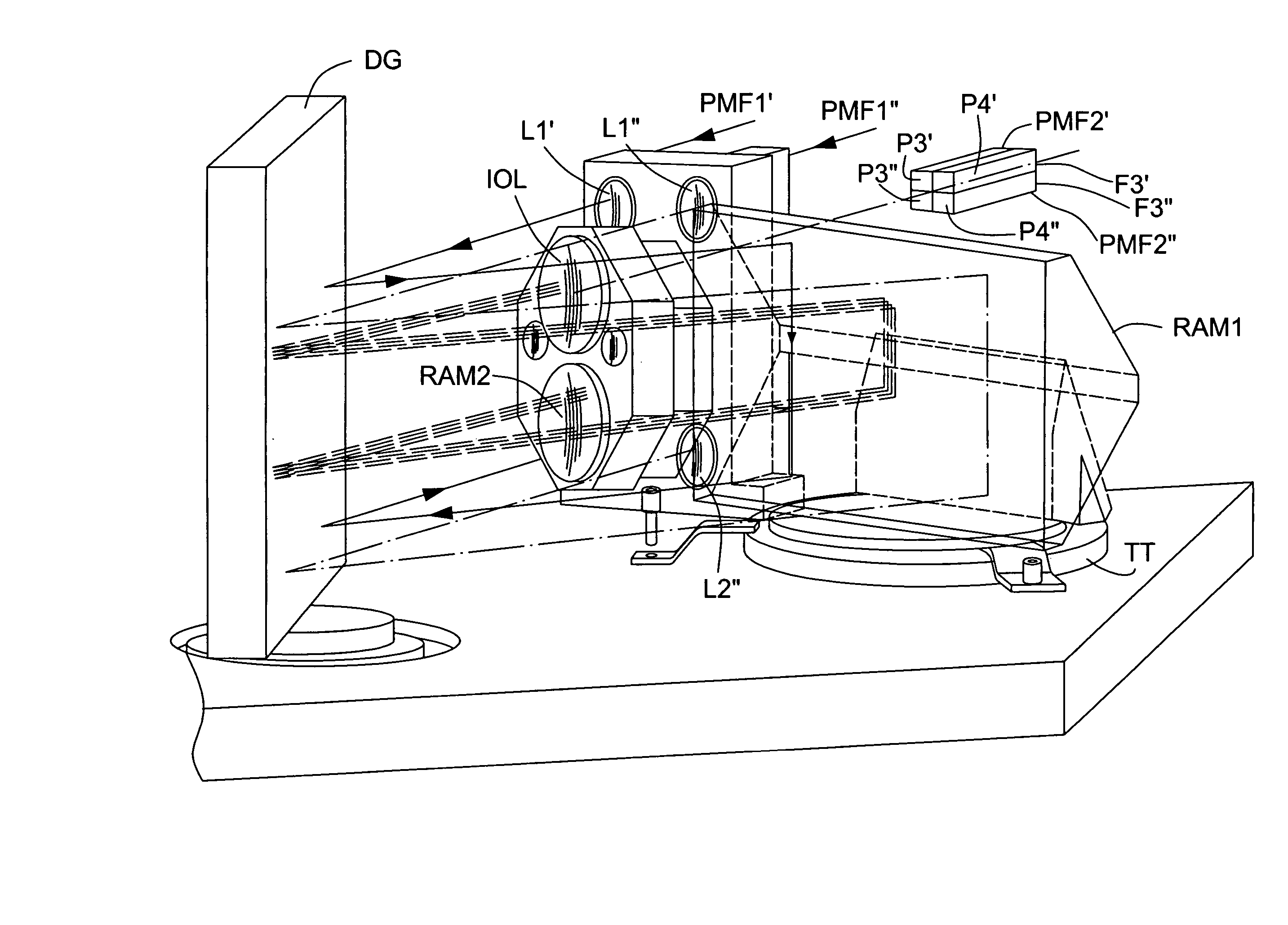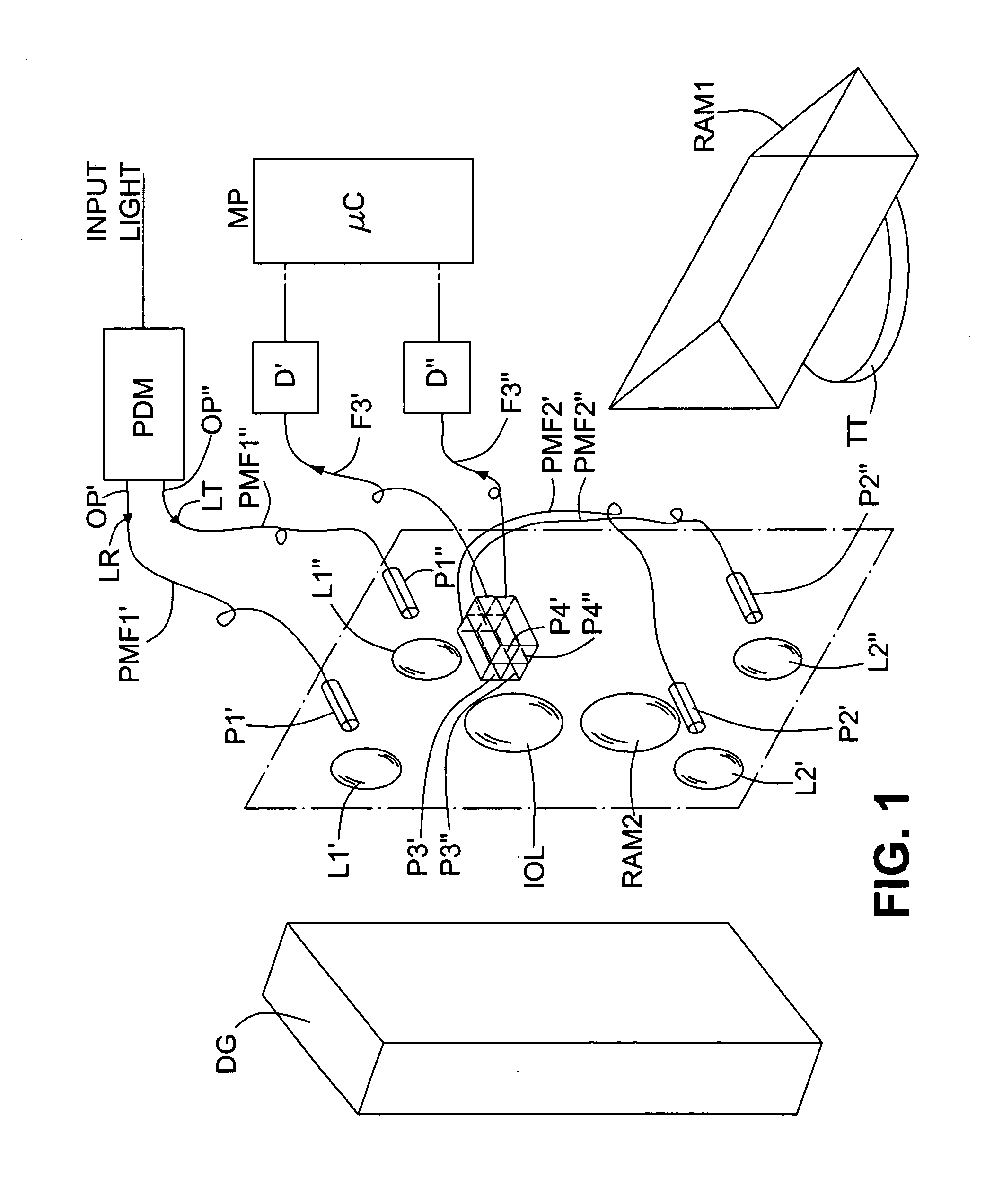High optical rejection optical spectrum analyzer/monochromator
a spectrum analyzer and optical spectrum technology, applied in the field of optical spectrum analyzers and monochromators, can solve the problems of noise floor, important limitations of optical rejection ratio (orr), and limitations, and achieve the effect of narrow spectral linewidth response and high optical rejection ratio
- Summary
- Abstract
- Description
- Claims
- Application Information
AI Technical Summary
Benefits of technology
Problems solved by technology
Method used
Image
Examples
second embodiment
the invention, embodying some of these modifications, will now be described with reference to FIG. 9 in which components corresponding to those in FIGS. 1 to 5 have the same reference designation. Basically, retroreflector RAM2 has been omitted and lens IOL replaced by lenses L3 and L4. Also, the lenses L3 and L4 are further apart, as compared with the configuration of the optical block shown in FIG. 5 for the OSA of FIG. 1, and the lenses L1′, L1″, L2′, L2″ are between them.
Referring to FIG. 9, the polarization decomposition means PDM, as before, splits an input light beam into its first and second components having mutually-orthogonal linear SOPs and outputs them via polarization-maintaining fibers PMF1′ and PMF1″, respectively, to first and second input ports P1′ and P1″, respectively, so that, when the first and second light beams LR and LT are launched into the monochromator first stage via ports P1′ and P1″, respectively, their linear SOPs are parallel to each other and to th...
PUM
 Login to View More
Login to View More Abstract
Description
Claims
Application Information
 Login to View More
Login to View More - R&D
- Intellectual Property
- Life Sciences
- Materials
- Tech Scout
- Unparalleled Data Quality
- Higher Quality Content
- 60% Fewer Hallucinations
Browse by: Latest US Patents, China's latest patents, Technical Efficacy Thesaurus, Application Domain, Technology Topic, Popular Technical Reports.
© 2025 PatSnap. All rights reserved.Legal|Privacy policy|Modern Slavery Act Transparency Statement|Sitemap|About US| Contact US: help@patsnap.com



